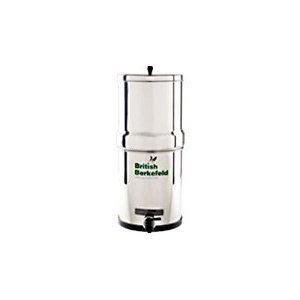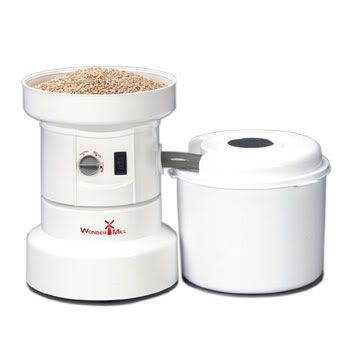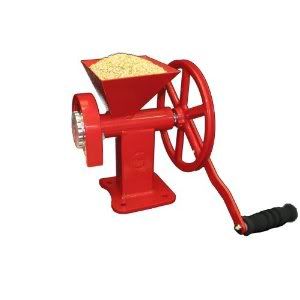To start the week, we ordered our Big Berkey water filter. We normally use the filter built in to our refridgerator, but that requires an electric pump and needs replaced every 6 months or so. The Berkey can process quite a bit of water, about 7 gallons per hour, and uses gravity to do it's job.

Sadly, that wasn't the most expensive purchase this week. For the last few years, we have been using the Whisper Mill, a great little electric grain mill that has been easy to maintain. It has done a great job turning our hard red wheat into bread ready wheat flour, and even managed to process amaranth flour.

The Whisper Mill is no longer produced, but has been replaced by the nearly identical Wonder Mill. From what little I've read, there's not a lot of difference between the two, and in the pictures they look nearly identical. As far as electric mills go, the Whisper Mill has a great reputation and for us has proven reliable, even when we enthusiastically had it grind an entire 25 lb bag of wheat into bread flour. It has always worked without complain, and offered only minor criticism when we asked it to process amaranth.
However, as great as the Whisper Mill is, our long term goal is to use a hand-powered grain mill, and started the search for our next mill several months ago. Owning a Diamant was a bit out of our price range, so we looked heavily at the Country Living Grain Mill. The Country Living mill has a good reputation, a significant following, and best of all, a large support network. However, it does have a few downsides. It's aluminum construction, while tough, isn't exactly bulletproof. Parts and accessories are available, but at a premium compared to similar products. And then, while thumbing through Mother Earth News, the answer appeared. There was a full page ad featuring a shiny red mill that looked incredibly sturdy. The Grainmaker (http://www.grainmaker.com/) is also made in Montana, so my dollars are staying somewhat local. It's starting price was higher than the Country Living Mill ($425 vs. $395) but it came with the extension bar and the auger, which wou ld have more than made up the difference. The construction is powder coated steel, and each unit is made and tested individually. There were some complaints on it being difficult to turn online, but there were enough people that used it regularly without incident to bring it to the top of our list. This was a decision that we were hoping to act on in April, but there was a notification on the Grainmaker website that prices are going up in mid-March, so we bit the bullet and ordered it early. In retrospect, I probably should have ordered the clamp (discounted if purchased with your mill) but my longer term plans would make it useless. We are already planning on how many different grains we will try grinding as soon as it arrives. The general rule of thumb is they run a 3 week build time, but that is just time to collect more flax, amaranth, spelt, and anything else we can get our hands on. Once we get the Berkey and Grainmaker in, we'll have to put them together and add reviews.
ld have more than made up the difference. The construction is powder coated steel, and each unit is made and tested individually. There were some complaints on it being difficult to turn online, but there were enough people that used it regularly without incident to bring it to the top of our list. This was a decision that we were hoping to act on in April, but there was a notification on the Grainmaker website that prices are going up in mid-March, so we bit the bullet and ordered it early. In retrospect, I probably should have ordered the clamp (discounted if purchased with your mill) but my longer term plans would make it useless. We are already planning on how many different grains we will try grinding as soon as it arrives. The general rule of thumb is they run a 3 week build time, but that is just time to collect more flax, amaranth, spelt, and anything else we can get our hands on. Once we get the Berkey and Grainmaker in, we'll have to put them together and add reviews.